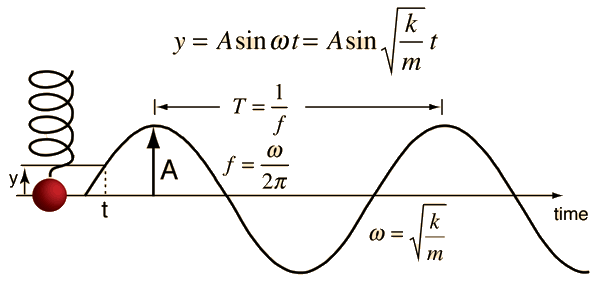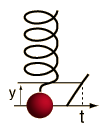Simple Harmonic Motion
Simple harmonic motion is typified by the motion of a mass on a spring when it is subject to the linear elastic restoring force given by Hooke's Law. The motion is sinusoidal in time and demonstrates a single resonant frequency.

| Motion equations | Motion calculation | Frequency calculation | Motion sequence visualization |
| Damped oscillation | Driven oscillation |
Periodic motion concepts
| HyperPhysics***** Mechanics | R Nave |




